Question:1
Is a driver permitted to cross an unbroken separation line in order to make a U-turn?
Category : Rules and Regulations
Question:2
If a vehicle is lawfully photographed while committing an offence, who of the following is held responsible for the offense?
Category : Rules and Regulations
Question:3
In a work vehicle:
Category : Rules and Regulations
Question:4
What must a driver do when approaching a railway crossing barrier which is marked by a traffic light?
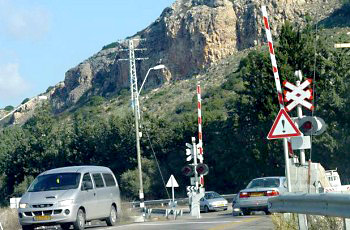
Category : Rules and Regulations
Question:5
What is a “pedestrian crossing”?
Category : Rules and Regulations
Question:6
Define “motor vehicle”:
Category : Rules and Regulations
Question:7
What is “overall length”:
Category : Rules and Regulations
Question:8
The following illustration shows an intersection with traffic signs. What is the correct manner of making a turn from street A to street C?
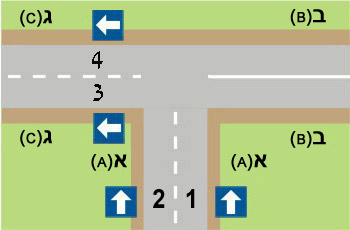
Category : Rules and Regulations
Question:9
Which type of "city policing" vehicle is permitted to emit a blue light with a flashing yellow light?
Category : Rules and Regulations
Question:10
Is it obligatory to wear safety belts in a utility vehicle?
Category : Rules and Regulations
Question:11
When there is a “no left turn” sign in an intersection:
Category : Rules and Regulations
Question:12
Which of the roads in the following illustration is a one-way road?
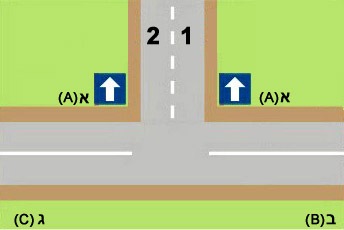
Category : Rules and Regulations
Question:13
When is a driver required to drive on the “hard shoulder” - where the “shoulder” is asphalt-paved and free of traffic - in order to allow another vehicle to overtake him?
Category : Rules and Regulations
Question:14
Up to which height is it permitted to load loose materials?
Category : Rules and Regulations
Question:15
In a vehicle that has an overall width of 210 centimeters or more and that is lawfully equipped with side lamps:
Category : Rules and Regulations
Question:16
Are we permitted to ride or drive a vehicle when part of our body is sticking out of the vehicle?
Category : Rules and Regulations
Question:17
Which types of vehicles must operate distress lights, or place a flashing yellow lamp, if forced to stand on a non-urban road during “light time”?
Category : Rules and Regulations
Question:18
Mark the correct sentence:
Category : Rules and Regulations
Question:19
Define an “axle” of a vehicle:
Category : Rules and Regulations
Question:20
What is a “private passenger car”?
Category : Rules and Regulations
Question:21
What is a “speed retarder”?
Category : Rules and Regulations
Question:22
Where should vehicles drive in a road divided by a Central divider?
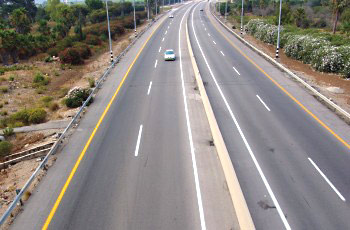
Category : Rules and Regulations
Question:23
A “new driver” that has not yet completed 2years or has not yet turned 21 years will not carry in a private passenger car:
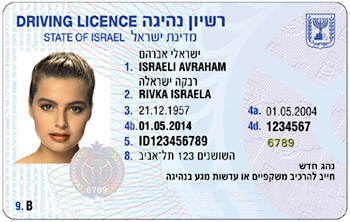
Category : Rules and Regulations
Question:24
Which vehicles are permitted to enter a freeway?
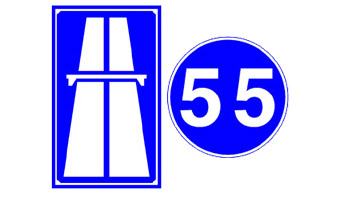
Category : Rules and Regulations
Question:25
What is the maximum permitted freight height during bulk transportation?
Category : Rules and Regulations
Question:26
Is it permitted to transport cargo in a private vehicle?
Category : Rules and Regulations
Question:27
What is a driver required to do when the loading of the braking system’s air tanks takes longer than a reasonable time?
Category : Rules and Regulations
Question:28
How should a vehicle driver conduct himself after hitting another vehicle or property in the absence of its owner?
Category : Rules and Regulations
Question:29
A “central divider” is:
Category : Rules and Regulations
Question:30
When is it permitted to drive in reverse?
Category : Rules and Regulations

